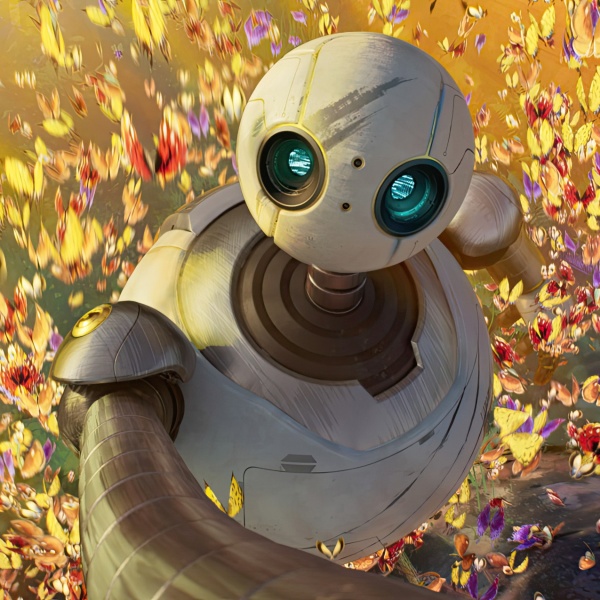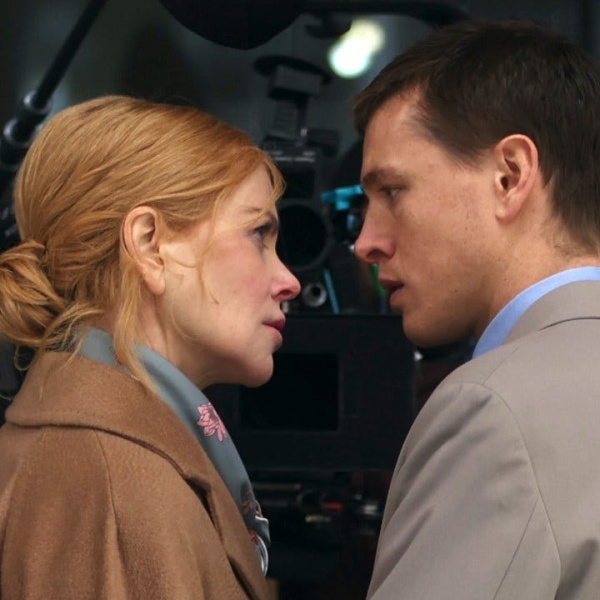[Editor’s note: This article includes some light spoilers for Prime Video‘s “Upgraded.”]
If there’s one thing that’s true about art and life: Nothing is ever really free. This goes double for art that shows up in film and TV. Each piece either needs to be created purposefully for a project by the art team or licensed from the artist or estate that holds the digital/image reproduction rights to it — unless you want a tattoo artist suing you for copyright infringement for putting an actual Mike Tyson tattoo on Ed Helms’ face. (In retrospect, that oversight is so glaring it seems like marketing for “The Hangover II.”)
We take it for granted, but everything that we see on screen is intentional. All the art must either be created by a project’s art team or licensed, whether that be old photographs on a desk, posters on a bedroom wall, graffiti on the side of a building, or, in the case of Carlson Young’s new film, “Upgraded,” multiple galleries full of modern art. If a piece isn’t purpose-made, someone has to track down who holds the rights and get their consent.
Ideally, every single piece of art on a set is “cleared” in advance, but schedules and budget can make licensing a white-knuckle process that’s part detective work, part negotiation, and part online stalking, all to find the artist who ended up on a mood board presentation and the amount of money (from zero to thousands of dollars) they’ll agree to take in exchange for the use of their artwork.
While museums and institutions such as the Library of Congress and iStock offer large libraries of pre-licensed images for commercial use, the trick is finding artwork that serves the story. Art is subjective, after all. Production teams need to make selections that say something about the characters and provide the audience with an instant understanding of place, class, culture, and tone. We get the central tension of “Upgraded” just from the first shots, which includes a reproduction of Hilma af Klint’s “Swan” series on a bright wall gallery wall that then reappears as a print on an off-white New York City apartment wall surrounded by clutter.
However, “Upgraded” gave itself the additional challenges of creating both a very Manhattan and a very London art world, the first of which is keeping art auction house intern and aspiring curator Ana (Camila Mendes) at arm’s length and the second of which is alluring enough for her to keep lying about being her boss. The film, therefore, brought on special art consultants Cece Karz and Priscilla Vail Caldwell, collectors and curators in their own right, to go straight to visual artists who’d appeal to Ana’s taste.
But the process of curating art for a film is subtly different than for a gallery. “Everything has to be a little exaggerated to come across,” Caldwell told IndieWire. Working with Young and production designer Andrew Holden-Stokes, Karz and Caldwell avoided portraiture and honed in on the kind of abstract art that would carry Ana’s enthusiasm and taste, read well on camera, and work with Holden-Stokes’ design choices to make the glitzy London gallery space feel different from the small New York gallery at the end of the film.

“It was interesting to find material that would [resonate with] someone in the art world, that they’d look at the objects in the background and say, ‘That feels right to me. It feels like the way it should be.’ That’s not so easy to do, to tell you the truth,” Caldwell said.
They also bumped up against the realities of what’s possible on a film set. “When we started, we were thinking maybe [the production] would either purchase the pieces or we would get somebody to loan the actual works. For many reasons, they don’t do that. So you basically take a high-resolution image, and [the art team] prints it on the very best paper and the very closest scale to the original work, and we work within those boundaries,” Karz told IndieWire.
Caldwell combed the East Coast while Karz tackled the West Coast, looking for artists who would be on Ana’s radar and have high-quality digital scans of their work that they’d be willing to loan. “We were able to really narrow in on people we felt that we would feel proud of 20 or 30 years from now when we look back on this movie, and maybe someone [with art in the last scene] will have become the next whoever,” Karz said. “Regardless, they are people that we love and feel represent what’s happening in the art world today.”

But Karz and Caldwell discovered that the film’s premise itself resonated with the artists they reached out to; they found themselves at the center of a network of artists recommending artists, which helped keep their search grounded in the world of emerging visual artists. “There are at least two examples that I can think of, of artists for whom that is their trajectory,” Caldwell said.
The curation of pieces that would be diverse, contemporary, and represent Ana’s joy for art was a collaboration between Karz, Caldwell, and Holden-Stokes; he and his production team reached out to connections in the London art world to stock that gallery with some fun easter eggs, but he focused on making the gallery and auction spaces as imposing or welcoming as they needed to be. That meant a lot of glass for the more modern New York branch, a lot of stonework for the European auction house, and an open and warm gallery space at the end.
“[The film’s about] this contrast between the business of art and the feeling of art and the joy of art,” Karz said. So the team was thrilled to clear works like Sarah Awad’s “Rose Talisman” and Sigrid Sandstrom’s “Ascendant,” which both grace Ana’s gallery at the end of “Upgraded.”
“It was really fun to look through Ana’s eyes and try to envision what kind of art she would want,” Karz said. “She would want to own a gallery that was welcoming and that was inclusive and that had artists who were contemporary and who meant something to her.”



